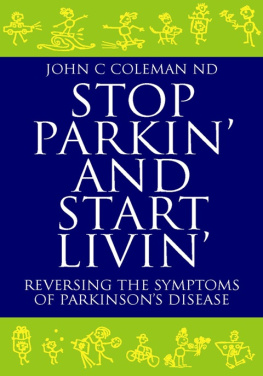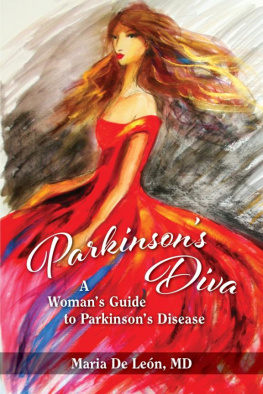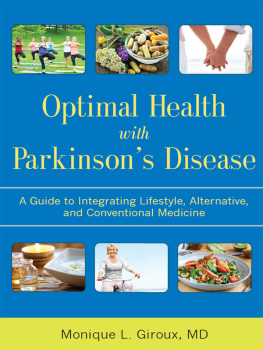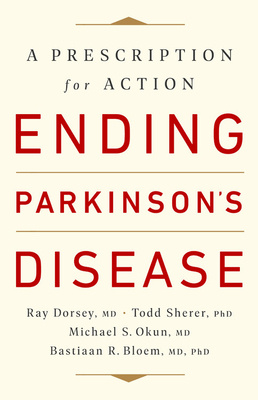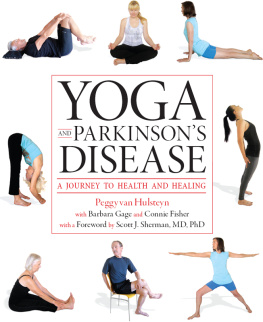First published in Australia 2005
by Michelle Anderson Publishing Pty Ltd
PO Box 6032
Chapel Street North
South Yarra 3141
Email: mapubl@bigpond.net.au
Fax: 03 9826 8552
Website: www.michelleandersonpublishing.com
Copyright: John C Coleman 2005
Cover design: Deb Snibson, Modern Art Production Group
Typeset and eBook production by: Midland Typesetters, Australia
National Library of Australia Cataloguing-in-Publication data
Coleman, John.
Stop parkin and start livin: reversing the symptoms of
Parkinsons disease.
ISBN 085572 368 8. (paperback)
ISBN 9780855724177. (ePub)
1. Parkinsons disease Patients. 2. Parkinsons disease
Popular works. 3. Parkinsons disease Treatment. I.
362.196833
Contents
A MESSAGE TO ALL HEALTH PRACTITIONERS
If we engage our patients with love,
approach them with humility,
speak to them with simplicity
and treat them as we would treat those we hold dearest,
then we can do no harm, and many will find their way to a better life with our help.
John Coleman
Introduction
R eturn to stillness is a naturopathic practice, a philosophy, a way of life and a protocol for treating neurological disorders. It is this last definition which is the central focus of this book. However, we cannot separate these four definitions in reality. The protocol was developed in my clinic in Melbourne and involves both embracing a philosophy of hope and peace, and reviewing our way of life to find that peaceful strength which lies within each of us.
The return to stillness protocol is not scientifically proven as are some (not all) conservative Western medical treatments. In this context, scientifically proven means that reproducible results are obtained when the treatment is used within a scientific methodology developed in the Western world in the last sixty years or so.
The fact that there is some sort of standard by which treatments for various disorders may be measured is laudable. These standards should protect the public against practitioners or companies who seek only to make large amounts of money from selling therapies without any proof or, perhaps, any real hope of efficacy. Unfortunately, the truth is somewhat at variance to this aim. Many of our commonly used medical treatments do not qualify under the strict guidelines of scientific methodology. Many drugs are allowed onto the market before we fully understand their actions, metabolic pathways, benefits, adverse effects or elimination mechanisms. For instance, in the 1980s, my son was given at least two drugs for the treatment of leukemia which were very poorly understood and yet were touted as good treatment. A casual read of MIMS (a very detailed drug guide) will reveal a large number of drugs still poorly understood in one or more areas. Surgery poses different problems; we cannot construct a double blind crossover study of surgical procedures; the patient is definitely aware of whether he or she is receiving surgical treatment, and the surgeon is always aware of delivering that service. We can only look at average outcomes to see whether any surgical procedure gives benefits outweighing the risks.
Despite the doubtful proof of the efficacy of some medical treatments, there are many life-saving drugs available, plus surgery and other therapies that bring great benefits to recipients. My only reason for putting forward this discussion is to clarify my position with regard to the return to stillness treatment protocol. This treatment is still entirely experimental. There are no studies available to show that a large majority of people receiving this treatment recover from neurological disorders. We have not been able to construct blind or double blind studies to prove the effectiveness of the treatment. We receive no funding from anyone to carry out any studies at all. There will be research to support the experiential hypotheses developed at return to stillness, but this is in the future.
All the statements about how the return to stillness treatment works, how various therapies should be used or how people do or may respond to the therapies are born of my own experience and discussion with other experienced therapists. As at this date (October 2005) my clinic appears to be the only clinic in the world fully committed to reversing the effects of the initiating trauma, and the trauma itself, as a pathway to the restoration of robust health. Many people with neurological disorders who embrace this approach come to my clinic for all their therapies. There are a significant number, however, who see other practitioners for Bowen Therapy, Flower Essences or Counselling and visit my clinic for reviews every eight to twelve weeks. There is also a growing number who undertake this journey by remote control people remote from Melbourne, both in Australia and overseas, who commence hydration and trauma recovery with instructions from Return To Stillness, and Bowen Therapy with a local therapist, without ever visiting my clinic. This is good but highlights the need for more practitioners to become involved in helping people move towards recovery from neurological disorders. As more practitioners around the world become fully at ease with this protocol, many more people will have easy access to effective treatment for neurological disorders and there is hope of this work being accepted as legitimate in the future.
Many people with neurological disorders have come to my clinic since April 1998 when it first became known that I had, indeed, recovered from my own stage IV Parkinsons disease. Some have given up quickly because the work was too hard or too expensive, some because progress was too slow. Others stayed for a while and then left for similar reasons, or because their carers lost the desire to help. But many have stayed and worked hard to get well. Their progress towards recovery is a testimony to their dedication to the return to stillness philosophy health is an individual responsibility and requires us to travel a challenging pathway, encountering obstacles to every part of our being, until we truly find that place of peace and fulfillment within ourselves and can return to stillness.
John C Coleman
Serious Stuff
The next few chapters tell my story (very briefly), describe Parkinsons disease in conservative terms, outline my hypothesis around the cause and development of the disorder and give an insight into what it feels like to have the symptoms of Parkinsons disease. I also talk about conservative diagnostic criteria and procedures.
If you want to start on the journey to wellness quickly, and dont need to know all this stuff, flip over to SECTION TWO; I wont be insulted at all, I promise.
How it Began
T he story of my illness and recovery is told in Returning To Stillness (available through the neuro recovery foundation inc.) and Shaky Past (yet to be published), with some extra details in APPENDIX 1. However, here is the very brief version.
In August 1995, after many years of slowly increasing pain, stiffness and tremor, I lost the ability to speak coherently and collapsed at my work. After visits to neurologists, a neuro-surgeon, physicians, naturopaths, osteopaths and herbalists, plus CT scans, MRIs and much general mucking around, I was diagnosed with Parkinsons disease (about stage IV on the Hoehn and Yahr scale) and developing Multi System Atrophy.
Because of the way I was treated during the diagnosis saga, I refused Western drug therapy (a decision supported by two very supportive surgeons I worked with at the time, and my own research into drug treatment), and set out to find a way to survive day by day and, perhaps, recover some of my health. At the time, I had been studying towards a Diploma of Naturopathy for some years, so was proactive in my approach to achieving health improvement rather than control of symptoms.

